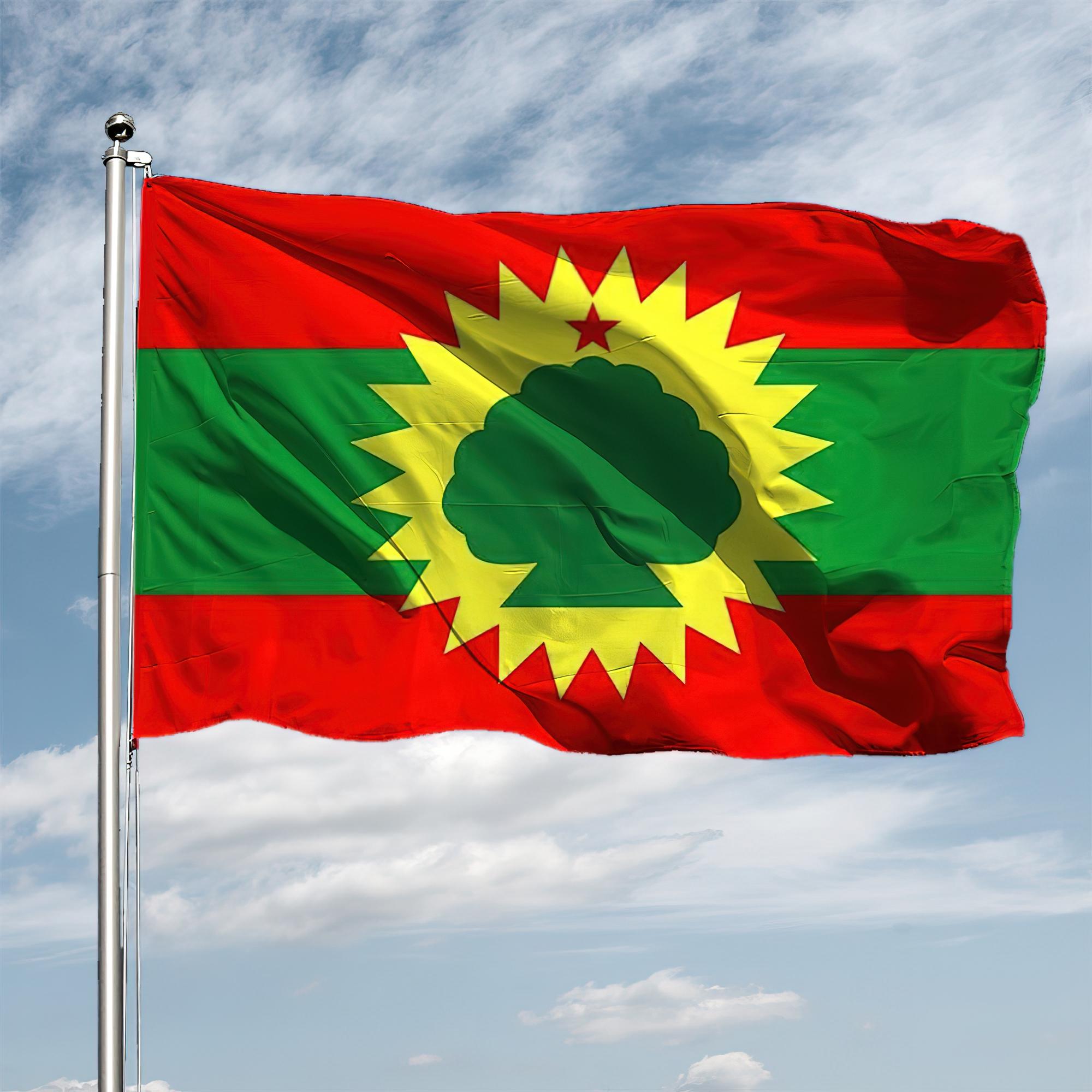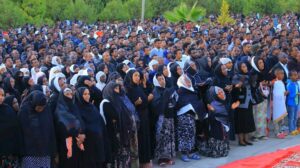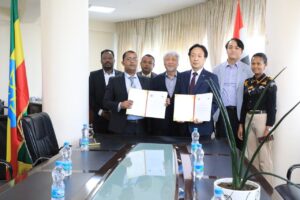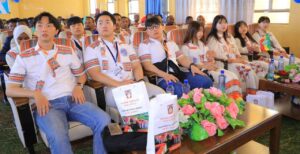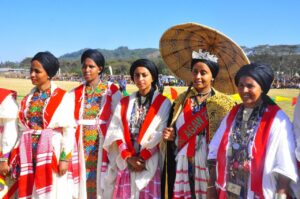THE PLIGHT FACED BY THE OROMO PEOPLE THROUGHOUT HISTORY
Ethiopia › Forums › Ethiopians › THE PLIGHT FACED BY THE OROMO PEOPLE THROUGHOUT HISTORY
-
AuthorPosts
-
18th September 2021 at 5:02 pm #2112
The purpose of this brief communique is to clarify to all stakeholders what the OLA’s raison d’etre and objectives are. It highlights the rationale for OLA’s continued military engagement with the dictatorial clique currently residing in Menelik’s palace. By now we believe that the international community is aware of the plight faced by the Oromo people throughout history.
 For many it is puzzling why the Oromo people, numerous in number and residing in some of the most resource-rich part of Africa, succumbed to oppression of successive minority regimes. Many possible factors may explain this anomaly. In the OLA’s understanding, the following factors contributed to our people’s predicament:
For many it is puzzling why the Oromo people, numerous in number and residing in some of the most resource-rich part of Africa, succumbed to oppression of successive minority regimes. Many possible factors may explain this anomaly. In the OLA’s understanding, the following factors contributed to our people’s predicament:- The policy of disarmament enforced specifically on Oromo communities since the early 19th Century. Oromos are historically settled in the hinterlands of North-East Africa with limited access to sea and by implication to the World. The geographic isolation means that Oromos had limited access to new knowledge and innovations- including modern weaponry, and limited opportunity for diplomatic relations with modern nations. Until the latter part of the 19th century-Oromos have effectively checked the expansionist ambitions of the Abyssinian Empire using their own indigenous military technologies and war tactics. Only the preferential supply of ammunitions to the Abyssinian Empire by European nations altered the power balance and put Oromos in a disadvantageous position socially, politically and economically. Since then, the central state has maintained a policy of disarmament among the Oromo population specifically to ensure they cannot resist the oppressive measures inflicted on them.
- The deliberate discriminatory social, political, and economic policies of Abyssinians. The victorious ruling class adopted discriminatory land and education policies. Oromo were stripped of their ownership of their land and were themselves reduced into serfdom. This kind of practice continues to this day, only now it is done in the name of expanding urban areas and land investments. The vast majority of Oromo children were denied access to education based on the notion that they will challenge the status-quo power if they become enlightened. Both the natural and human resources of Oromia had been severely exploited.
- Discriminatory urbanization policies. The Abyssinian Empire was able to maintain its southern conquests by erecting several military garrisons in strategic areas in which they placed armed settlers and soldiers. Over time, these garrisons grew into urban areas which carried with them the anti-Oromo stigma that they were founded upon. This rural-urban demographic bias is very visible even today with negative socioeconomic and environmental consequences for the indigenous population. The Abyssinian-dominated urban cantered enclave economy nurtures and exacerbates inequality in economic opportunity between the indigenous population and the urbanites. This has manifested itself through the south of the country, including in areas outside of Oromia. The system creates an urban-centric alternative market, which does not demand social and cultural skills of the host population. The system rather actively encourages the immigration of people from the Abyssinian core areas such as North Shoa, Gojam, Gonder, etc. The system creates an enabling environment for the speedy incorporation of new immigrants into the enclave economy at the expense of the host population. A worrying side effect of this has been the development of resentments between the rural-based indigenous people and the urban-based immigrants and their descendants. The Abyssinian-enclave economic system also permeates into the political spheres of Ethiopia. Today we have many political parties in Ethiopia, who are created to sustain the Abyssinian hegemony and their enclave economic system, all of which is cleverly done under the banner of Ethiopia to give it an image of inclusivity and pluralism. The latest of these urban-centric parties is the so-called Prosperity Party of Abiy Ahmed. The chairman of this party and the current prime minister has clearly demonstrated his nostalgia for the Abyssinian authoritarian system of governance both via concrete actions and speeches. He spent billions of taxpayers money on the erection of statues for Abyssinian monarchs and the beautification of imperial palaces. The party favours policies and strategies that strengthen and perpetuate the enclave economic system. They borrow billions of dollars in the name of Ethiopia but investment projects are strategically prioritized in such a way that the participants in the enclave economic systems drive maximum benefit, while the host population suffers from the negative social and environmental externalities of these ill planned projects.
Regrettably the last 150 years have been years of lost opportunities for the Oromo and the peoples of Ethiopia. Billions of dollars of borrowed and donated financial/material resources and technical assistance from friendly developed countries could not significantly change the image of Ethiopia as a poster child of famine and destitution. Even today millions of people survive on food handouts from friendly countries. Due to the coercive and discriminatory political system perpetuated by the ruling class, generations of Oromos adopted an extremely risk-averse attitude and captive mentality, which shackled the innovative spirit and positive outlook, which is a fundamental ingredient for development.
During the last one and a half century, the Oromo people strived to gain its freedom and institute a just economic and political system that is beneficial not only for itself but also for all the peoples of Ethiopia many of whom have suffered similar historical experiences. These efforts did score some positive developments but fundamental changes could not be realized mainly because of the dominance of the ideology of the urban-enclaves in the military and security system of the country and the entrenched nature of the enclave socioeconomic system, which provides political and diplomatic advantages to Abyssinian rulers.
The Oromo Liberation Army(OLA) believes that fundamental and durable change is only possible when the people’s peaceful struggle is supported by efforts to change the prevailing military power imbalances. To realize meaningful and tangible socioeconomic development, the Oromo people need to operate under a safe and peaceful environment. Unfortunately, the Oromos are once again pushed to take-up arms and embark on a just war against this tyrannical, unjust system in order to restore their dignity and create a peaceful environment for credible socioeconomic development. While the OLA believes that this war is morally justifiable, it also strictly adheres to the moral conduct within war and observes the ethics of modern warfare in contrast to unbelievably brutal conduct of the national army, regional police, federal police, and special forces owned and deployed by the current ruling regime. Specifically, the OLA:
- Strongly denounces religious extremism and any form of terrorism. In fact, the OLA can be considered as a partner in the struggle against these social ills.
- The OLA believes in and struggles to ensure the democratic right of all people to freely determine their own fate in spheres of life. .
- The OLA strongly upholds individual and group rights of peoples. Only free people can make meaningful contributions to sustainable development. That is why members and supporters of the OLA are paying huge sacrifices in life and other resources.
- The OLA believes that the international community can minimize these sacrifices by using their convening power and influence. We warn the international community not to once-again be fooled by the ruling clique in the capital city.
OLF-OLA High Command
October 1st, 2020Ethiopia Autonomous Media
18th September 2021 at 6:20 pm #2119THE OROMO LIBERATION ARMY (OLF-OLA) LEADERSHIP CHANGES
The Oromo Liberation Army (OLF-OLA) has successfully held a general assembly attended by military commanders, officers, fighters and members.
 During this assembly, important decisions were reached with full consensus regarding strategy, current events, and the future of the struggle. Furthermore, new appointments and leadership changes were also made. Participants of the OLF-OLA general assembly held in Gimbi town (Western Zone) included representatives from all four Walaga zones, Jimma, Illu Abba Bora, Buno Bedele as well as representatives from the Central Zone- including the Central Zone Commander. Commanders and officers of the Southern Zone participated in the general assembly virtually.
During this assembly, important decisions were reached with full consensus regarding strategy, current events, and the future of the struggle. Furthermore, new appointments and leadership changes were also made. Participants of the OLF-OLA general assembly held in Gimbi town (Western Zone) included representatives from all four Walaga zones, Jimma, Illu Abba Bora, Buno Bedele as well as representatives from the Central Zone- including the Central Zone Commander. Commanders and officers of the Southern Zone participated in the general assembly virtually.At the conclusion of this assembly, consensus was reached on the following points:
OLF-OLA is its own independent organization which will carry forward the original mission of the Oromo Liberation Front as stated in its 1976 political program.
Jaal Marroo (Kumsa Diriba), formerly commander of the OLA in the Western Zone, has been elected Commander-in-Chief of the OLF-OLA.
Jaal Gammachu Abboye, formerly commander of the OLA in the Southern Zone, has been elected Deputy Commander-in-Chief of the OLF-OLA.
Jaal Odaa Tarbii will continue in his position as International Spokesperson of the OLF-OLA.
OLF-OLA General Assembly
26th July, 2021Ethiopia Autonomous Media
18th September 2021 at 7:39 pm #2120THE OROMO LIBERATION ARMY (OLF-OLA)
It has come to our attention that the current prevailing media narrative on the situation in East Walaga has been heavily distorted from the facts on the ground.
 Again we are seeing the media fall into the trap of being misled by the well-organized propaganda campaigns of the irredentist National Association of Amhara’s (NaMA) diaspora wing. This has happened before in regards to coverage of events in Wollo, Metekel, Horo Guduru, and West Walaga. We want to set the record clear on what exactly has been occurring in East Walaga this month and the events that have led up to it.
Again we are seeing the media fall into the trap of being misled by the well-organized propaganda campaigns of the irredentist National Association of Amhara’s (NaMA) diaspora wing. This has happened before in regards to coverage of events in Wollo, Metekel, Horo Guduru, and West Walaga. We want to set the record clear on what exactly has been occurring in East Walaga this month and the events that have led up to it.First, it is important to note that the situation in East Walaga is different from what occurred previously in Horo Guduru and West Walaga. In those cases, government-aligned militias working in coordination with Oromia Special Forces committed horrific massacres of Amhara civilians intending to blame the Oromo Liberation Army (OLA). As the Oromia regional state government and the Ethiopian federal government became more focused on the Tigray War, we have seen a complete halt to those false-flag operations- a hint to who was responsible. Since then, as was the case before, Amharas continue to live peacefully in OLA-administered areas without any issue. As we did at the time and repeatedly since then, for the sake of justice we are still demanding an independent investigation into those massacres- we are confident the truth is on our side.
In regards to the situation in East Walaga, Oromo Liberation Army, OLA, over the last year, we have seen the rise of well-trained Amhara militias arriving in the area. Specifically, they have been operating in the part of East Walaga that lies between Nekemte and the Blue Nile (which is the border to Amhara Regional State). On April 15th, armed Amharas drove out Oromo farmers and burned their crops in a place called Mender 10 (also known as Lalistu Angar). The extent of the fires was large enough to be caught on satellite which shows over 3000 hectares of farmland being burned as well as homes (refer to this thread: https://twitter.com/Quen10Tarantino/status/1384417207912906755). In the same month, seemingly in coordination, armed Amharas launched attacks further north in East Walaga- specifically the towns of Agamsa and Kiramu. The situation was dire enough for both the East Walaga Zone Communication Bureau and the Gida Ayana District Communication Bureau to issue similar statements on Facebook decrying the actions of this militia ((i) https://www.facebook.com/wdhkm.godinawallaggaabahaa/posts/499574804786826, (ii) https://www.facebook.com/giddaa.ayyaanaa.9/posts/895531644324976). According to these statements, the militia had targeted and killed 13 Oromo civilians and destroyed 65 structures (including 47 homes). The statements refer to the militia as a “radical force” trying to agitate revolt among Amhara communities that had been resettled in East Walaga during the famine of the Derg era. They also state that the militia, which wore “pale uniforms” and carried an “illegal flag with the symbol of a lion”, was trying to instigate ethnic clashes between Oromos and the Amhara communities in the area. Flyers were being posted in the town of Gutin stating that Oromos had to “leave the ancestral land of Amharas”.
According to our sources, the militia consisted of fighters without uniforms as well as fighters wearing the tan uniform of the Amhara Special Forces. While the civilian administration of the East Walaga zone denounced their operations, the Oromia security officials did not commit to stopping their activities because the militia was also clashing with OLA forces. It was only after the Amhara militia killed 4 Oromia Special Forces unprovoked that the security forces began to take measures. They evicted many Amhara communities not just from Mender 10, but also from further north in Kiramu. The militia was also driven off the main roads and they remained dormant until the beginning of this month. According to the account given by a resident of Kiramu to BBC (https://www.bbc.com/afaanoromoo/oduu-58313687), the male members of the evicted Amharas left their wives and daughters in Amhara regional state and returned to Kiramu, Agamsa, and Haro carrying weapons. According to our forces, a large contingent of armed Amhara men in civilian clothing were seen arriving in Kiramu, Sire Doro, Agamsa, and Amuru after crossing the Blue Nile on August 13th – exactly one day after Oromia Special Forces retreated from the area. Their arrival in Kiramu on that day is substantiated by eyewitness accounts to the BBC. Since then they have been active throughout the area, driving people out of their homes and burning the houses down. For example, in Lalistu Sombo (near Kiramu), they burned down 18 homes belonging to the following individuals plus two others whose names are currently unknown.:
1) Guddataa Jabeessaa
2) Gammachuu Jabeessaa
3) Fiqaaduu Gammachuu
4) Faqqadaa Gamachuu
5) Shaggaa Gammachuu
6) Baabbee Gabulee
7) Dammashaa Girshoo
9) Lammii Jabeessaa
10) Waaqooo Jabeessaa
11) Katamaa Jabeessaa
12) Badhasaa Nagarii
13) Bukkuu Galataa
14) Margaa Abbuyee
15) Tamasgeen Abbuyee
16) Hordofa AbuyeWhen our forces arrived in Kiramu, it was these Amhara fighters that began engaging them in a firefight. They were armed not just with AK-47s but had heavier weaponry such as DShK (locally known as Dishkas) and Dragunov snipers. It was only after they sustained heavy casualties that they were driven out of Kiramu. That same day, in Sire Doro, these newly arrived fighters slit the throats of 7 Oromo civilians accusing them of passing information to OLA forces. It took several engagements with these forces to drive them out of Sire Doro, Agamsa, and Amuru.
Similarly, further south in Uke Karsa and Horo Aleltu, in what again looks like coordinated activity, a unit of uniformed Amhara Special Forces alongside federal forces clashed with the OLA. Following that clash, they severely beat random young men in Uke Karsa, killing 3 of them. From what we know, the federal military’s coordination with this force has caused a rift between the federal military and the Oromia regional forces due to what had happened in Mender 10 back in April of this year.
Our forces are still engaging with this newly deployed Amhara militia who have been undertaking a campaign of burning down the homes of Oromo civilians to intimidate them into leaving the area. So far over a hundred homes have been burned. These fighters are a well-armed, well-trained group with a clear objective to agitate the peaceful Amhara communities in East Walaga into revolt by sparking ethnic clashes. Even though this militia does not wear uniforms and often operates by blending with the existing Amhara communities that have lived side-by-side with our people for almost a century, our forces have gone above and beyond to ensure no innocent civilians are harmed.
However, we are now seeing the usual cabal of diaspora-based propagandists working on behalf of NaMA and the irredentist elements of the Amhara Regional State government to push a false narrative in the interest of their political agenda. Due to this, the contrast between the current prevailing media narrative and the facts on the ground are night and day. They are purposefully presenting the casualties suffered by the Amhara militia as the victims of random, wanton attacks by the OLA on innocent Amhara civilians. It is deeply disappointing and worrying that the Amharic Program of a reputable media organization such as Deutsche Welle has echoed this propaganda and passed it on as a substantiated fact. If there were any innocent civilians caught in the crossfire, we are prepared to accept responsibility and we will do what we can to assure there is justice. We once again demand an independent investigation by the United Nations or any other concerned third party so that the world can understand just how easily the truth gets distorted.
Moreover, we would also like to point out that what is happening in East Walaga right now is not a unique case in Oromia; Amhara state security forces have crossed the border and launched an invasion in Fantale, Karrayu- located in the north-eastern part of Oromia. There has been heavy fighting between Karrayyu Oromo civilians and Amhara security forces which have encroached several kilometres into Oromia. In that situation, we have seen the resettling of people from Amhara state into the captured land in Oromia. This is all part of a trend we are seeing throughout the country: claims of “ancestral ownership” made by the radical, powerful elements in the Amhara regional state’s government are being enforced by the state’s security apparatus. That has resulted in the terror we have seen in Western Tigray, Metekel, Wollo, and now East Walaga and Karrayu. It has been a significant destabilizing factor in the region. When enabled and allowed to reach its objectives; we will see the kind of brutal ethnic cleansing that has happened in Western Tigray be repeated throughout the country. It should be remembered that Deputy Prime Minister Demeke Mekonen- himself a senior official of the Amhara Prosperity Party- not only publicly called for the arming and organizing of Amhara civilians- but personally oversaw training sessions in Metekel (https://addisstandard.com/news-deputy-pm-recommends-arming-civilians-in-metekel-benishangul-gumuz-region-as-spate-of-attacks-by-armed-men-leaves-dozens-killed/). In Wollo, Amhara regional forces launched several attacks on Oromo communities over two years intending to spark a large ethnic clash to use as a pretence to disarm and occupy the local Oromo farming communities (https://www.vice.com/en/article/93ybyy/they-set-everything-on-fire-the-paramilitary-forces-killing-people-theyre-meant-to-protect). There was a horrific case of mob violence when an ambulance carrying injured Oromo civilians from Wollo to the federal capital city (Finfinee) was attacked and everyone inside was brutally murdered (https://addisstandard.com/analysis-horrifying-accounts-of-violence-in-amhara-region-fed-ombudsman-slams-regional-govt-performance-says-303-killed-so-far/). It was only when the Oromo farmers began to defend themselves that the NaMA’s propaganda arm began to promote a heavily distorted account of events. This has been an extremely irresponsible undertaking on the part of the Amhara elite implemented with no regard for the lives of everyday Amhara and Oromo civilians. OLA forces do not consider any nationality or people their enemy, they are on a mission to save this region from the brutality of this oppressive regime and remain committed to that cause.
The international community and media must act responsibly and do their due diligence when covering and considering these events. We live in an age of fake news and propaganda; much of it propagated by state structures themselves. It is easy to fall prey to the spectre of legitimacy that propagandist outfits funded by the Ethiopian state (for example; the Global Ethiopian Advocacy Nexus (GLEAN) and the “Genocide Prevention in Ethiopia” organization) rely on to have their falsehoods accepted. As always, we invite all interested independent parties to come and investigate the issue themselves.
Victory to the Oromo and All Oppressed Peoples!
OLF-OLA High Command
August 25th, 2021Ethiopia Autonomous Media
21st September 2021 at 9:03 pm #2164PRESS RELEASE: Regarding Mr Gollicha Dhenge’s Return to Civilian Life
 There has been a lot of confusion in regards to former OLA southern zone commander, Mr Gollicha Dhenge’s return to civilian life. Contrary to government news reports, Mr Gollicha has not been an OLA commander for over a year as he had withdrawn from the field to seek medical treatment. To maintain military operations, Mr Gollicha’s former deputy, jaal Gammachiis Aboye, was promoted to take his place. Following his recovery, Mr Gollicha refused several requests to return to the field and resume his command. Moreover, he also refused to participate in the OLF-OLA General Assembly held in July citing disagreements with the rest of the commanders. We understand his decision to return to civilian life given his health condition, moreover; as a respected veteran of the Oromo struggle who led OLA forces in the southern zone for over a decade, we wish him the best in his future endeavours.
There has been a lot of confusion in regards to former OLA southern zone commander, Mr Gollicha Dhenge’s return to civilian life. Contrary to government news reports, Mr Gollicha has not been an OLA commander for over a year as he had withdrawn from the field to seek medical treatment. To maintain military operations, Mr Gollicha’s former deputy, jaal Gammachiis Aboye, was promoted to take his place. Following his recovery, Mr Gollicha refused several requests to return to the field and resume his command. Moreover, he also refused to participate in the OLF-OLA General Assembly held in July citing disagreements with the rest of the commanders. We understand his decision to return to civilian life given his health condition, moreover; as a respected veteran of the Oromo struggle who led OLA forces in the southern zone for over a decade, we wish him the best in his future endeavours.Victory to the Oromo and All Oppressed Peoples!
OLF-OLA High Command
September 20th, 2021Ethiopia Autonomous Media
21st September 2021 at 9:03 pm #2165PRESS RELEASE: Regarding Mr Gollicha Dhenge’s Return to Civilian Life
 There has been a lot of confusion in regards to former OLA southern zone commander, Mr Gollicha Dhenge’s return to civilian life. Contrary to government news reports, Mr Gollicha has not been an OLA commander for over a year as he had withdrawn from the field to seek medical treatment. To maintain military operations, Mr Gollicha’s former deputy, jaal Gammachiis Aboye, was promoted to take his place. Following his recovery, Mr Gollicha refused several requests to return to the field and resume his command. Moreover, he also refused to participate in the OLF-OLA General Assembly held in July citing disagreements with the rest of the commanders. We understand his decision to return to civilian life given his health condition, moreover; as a respected veteran of the Oromo struggle who led OLA forces in the southern zone for over a decade, we wish him the best in his future endeavours.
There has been a lot of confusion in regards to former OLA southern zone commander, Mr Gollicha Dhenge’s return to civilian life. Contrary to government news reports, Mr Gollicha has not been an OLA commander for over a year as he had withdrawn from the field to seek medical treatment. To maintain military operations, Mr Gollicha’s former deputy, jaal Gammachiis Aboye, was promoted to take his place. Following his recovery, Mr Gollicha refused several requests to return to the field and resume his command. Moreover, he also refused to participate in the OLF-OLA General Assembly held in July citing disagreements with the rest of the commanders. We understand his decision to return to civilian life given his health condition, moreover; as a respected veteran of the Oromo struggle who led OLA forces in the southern zone for over a decade, we wish him the best in his future endeavours.Victory to the Oromo and All Oppressed Peoples!
OLF-OLA High Command
September 20th, 2021Ethiopia Autonomous Media
-
AuthorPosts
You must be logged in to reply to this topic.


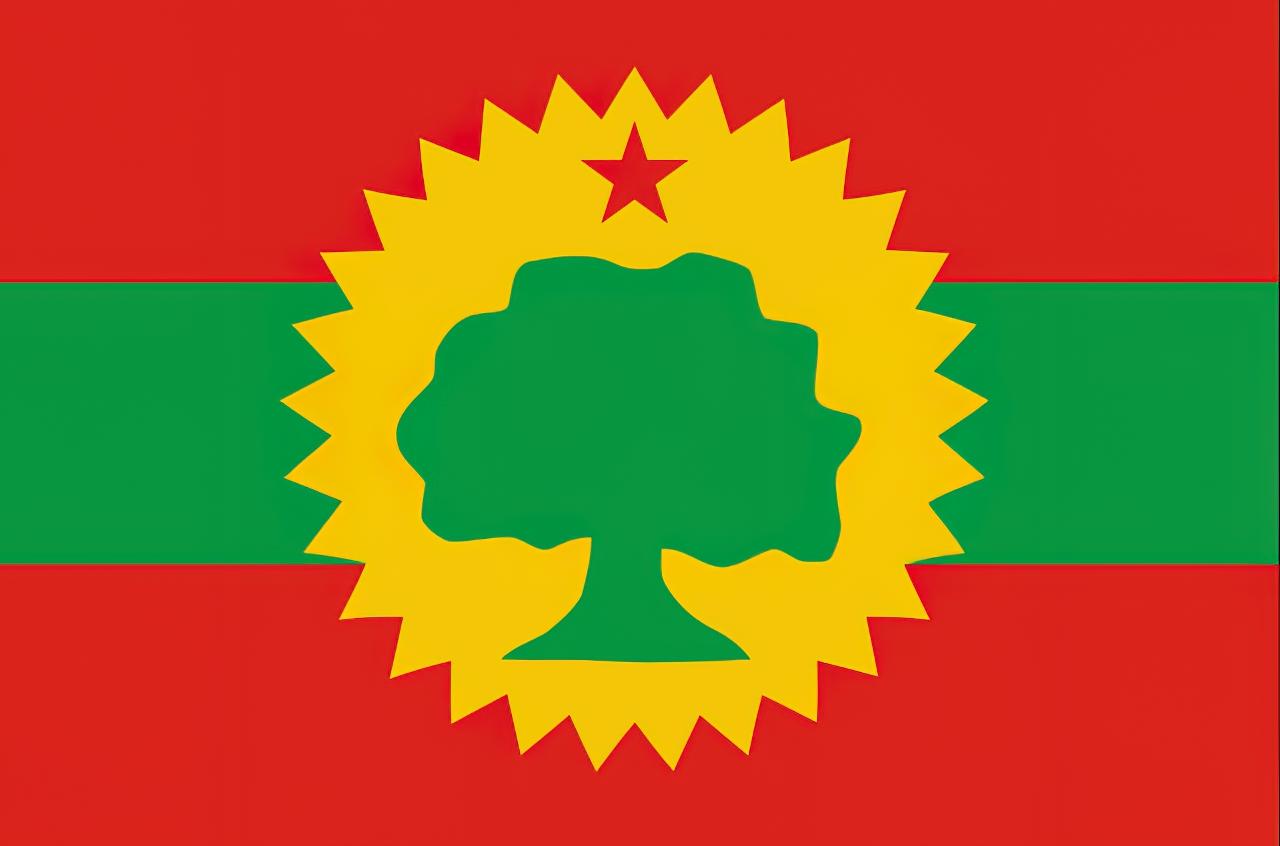 During this assembly, important decisions were reached with full consensus regarding strategy, current events, and the future of the struggle. Furthermore, new appointments and leadership changes were also made. Participants of the OLF-OLA general assembly held in Gimbi town (Western Zone) included representatives from all four Walaga zones, Jimma, Illu Abba Bora, Buno Bedele as well as representatives from the Central Zone- including the Central Zone Commander. Commanders and officers of the Southern Zone participated in the general assembly virtually.
During this assembly, important decisions were reached with full consensus regarding strategy, current events, and the future of the struggle. Furthermore, new appointments and leadership changes were also made. Participants of the OLF-OLA general assembly held in Gimbi town (Western Zone) included representatives from all four Walaga zones, Jimma, Illu Abba Bora, Buno Bedele as well as representatives from the Central Zone- including the Central Zone Commander. Commanders and officers of the Southern Zone participated in the general assembly virtually.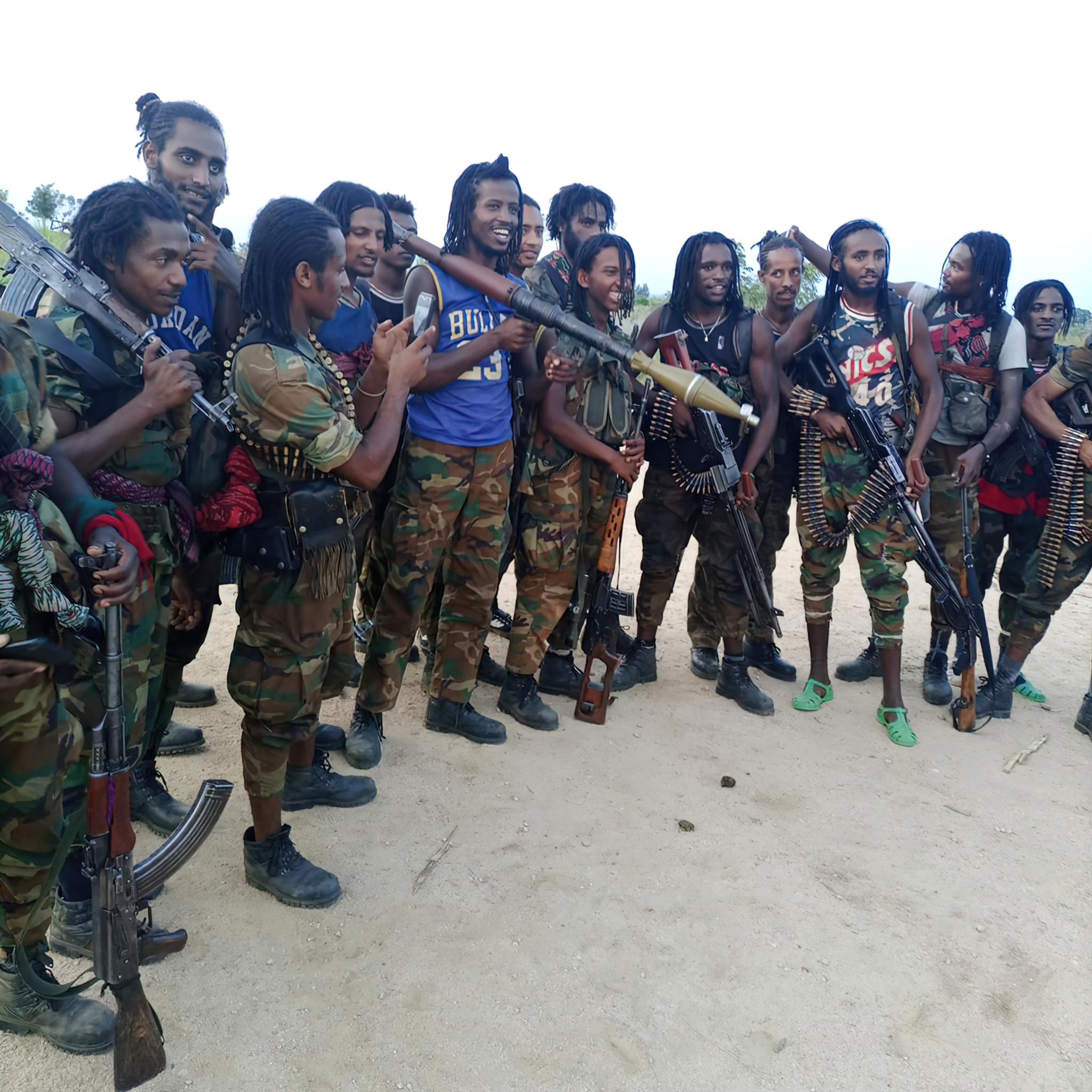 Again we are seeing the media fall into the trap of being misled by the well-organized propaganda campaigns of the irredentist National Association of Amhara’s (NaMA) diaspora wing. This has happened before in regards to coverage of events in Wollo, Metekel, Horo Guduru, and West Walaga. We want to set the record clear on what exactly has been occurring in East Walaga this month and the events that have led up to it.
Again we are seeing the media fall into the trap of being misled by the well-organized propaganda campaigns of the irredentist National Association of Amhara’s (NaMA) diaspora wing. This has happened before in regards to coverage of events in Wollo, Metekel, Horo Guduru, and West Walaga. We want to set the record clear on what exactly has been occurring in East Walaga this month and the events that have led up to it.